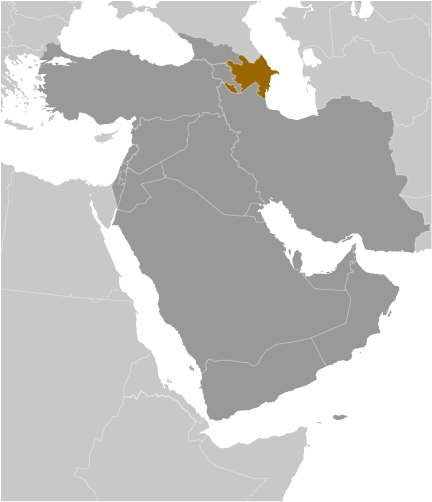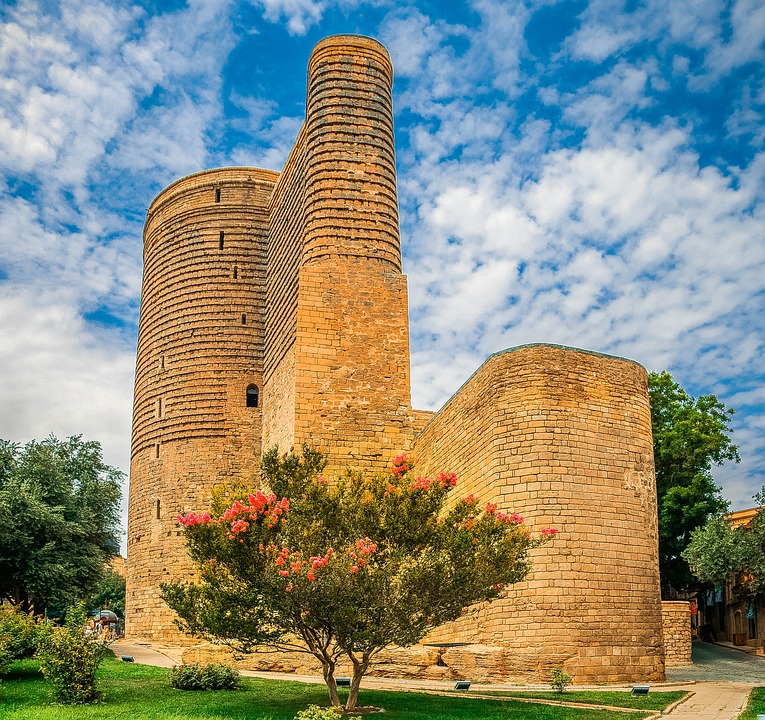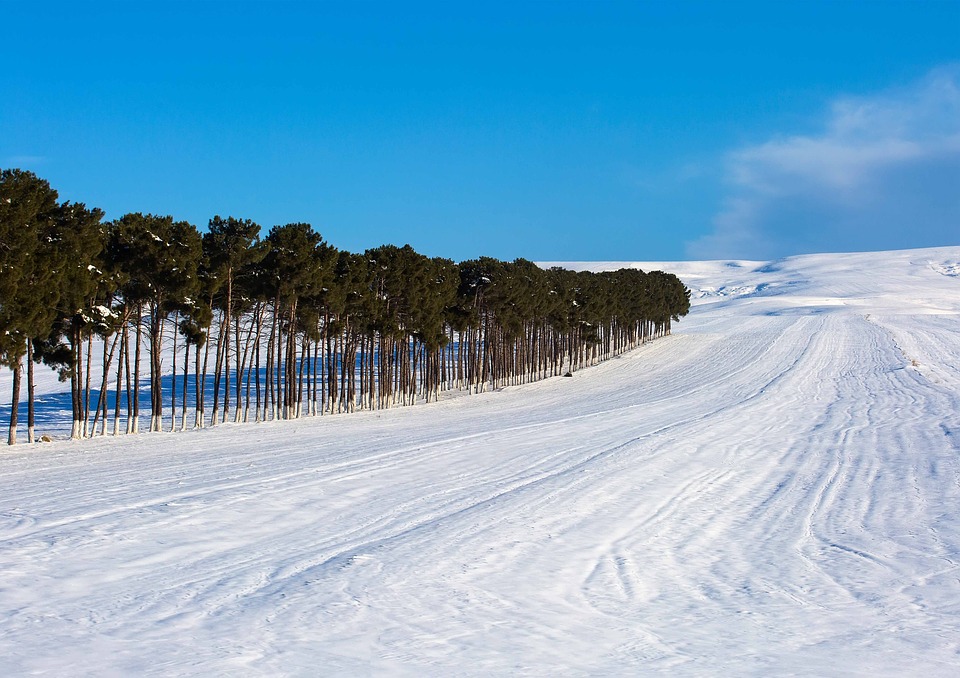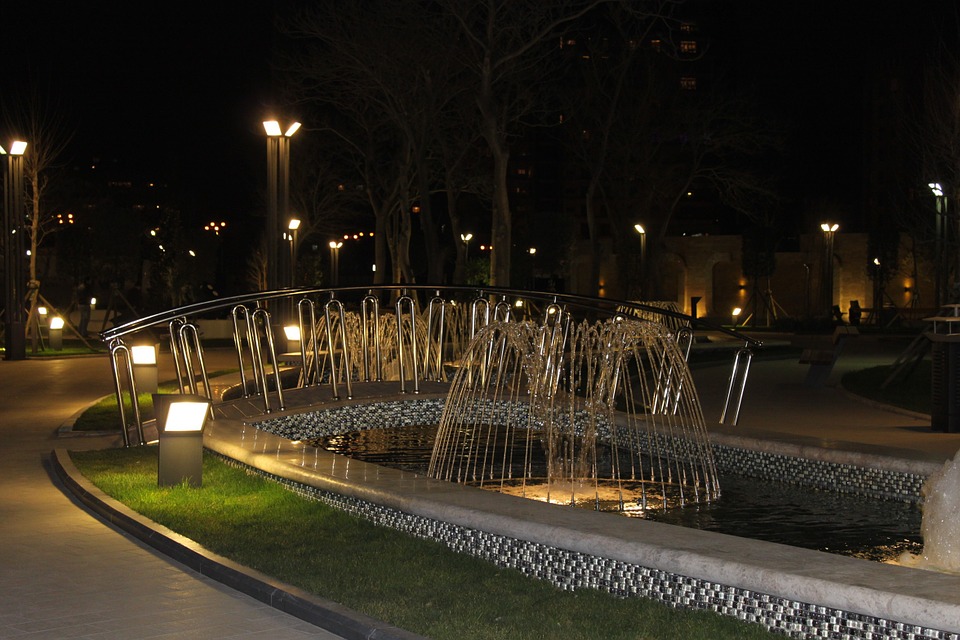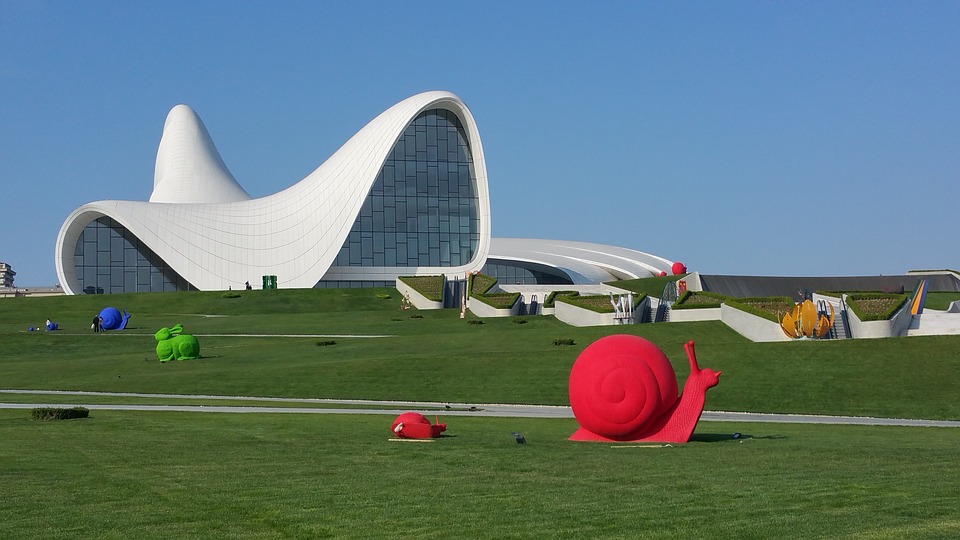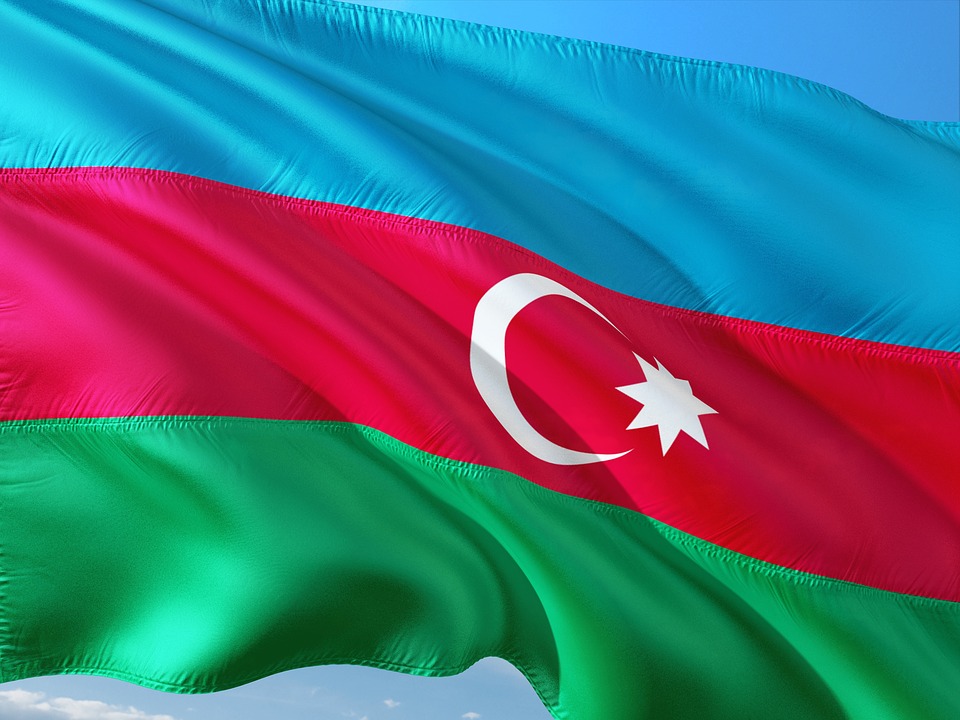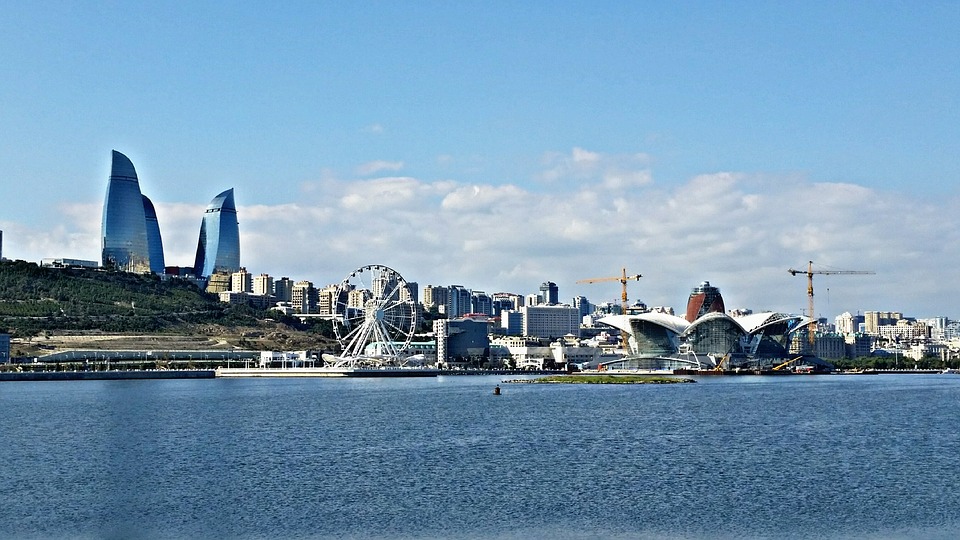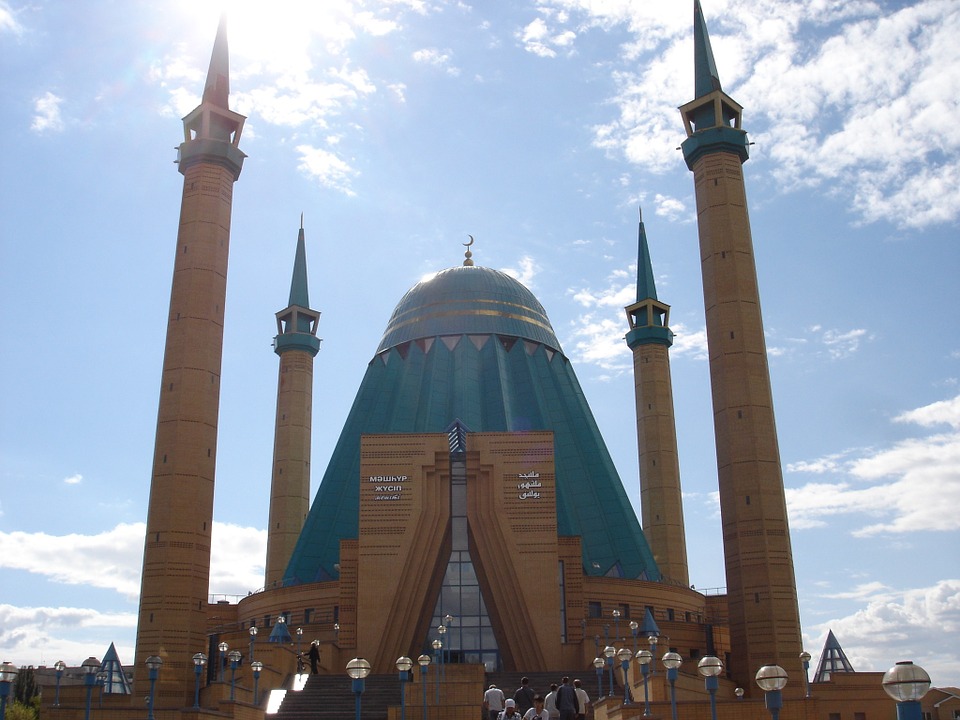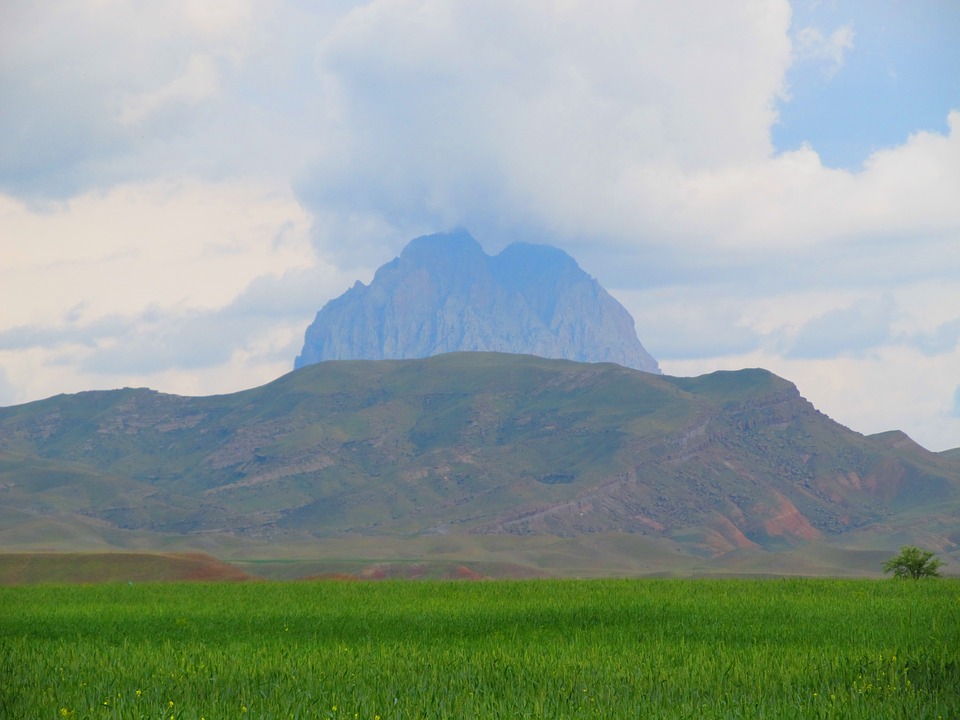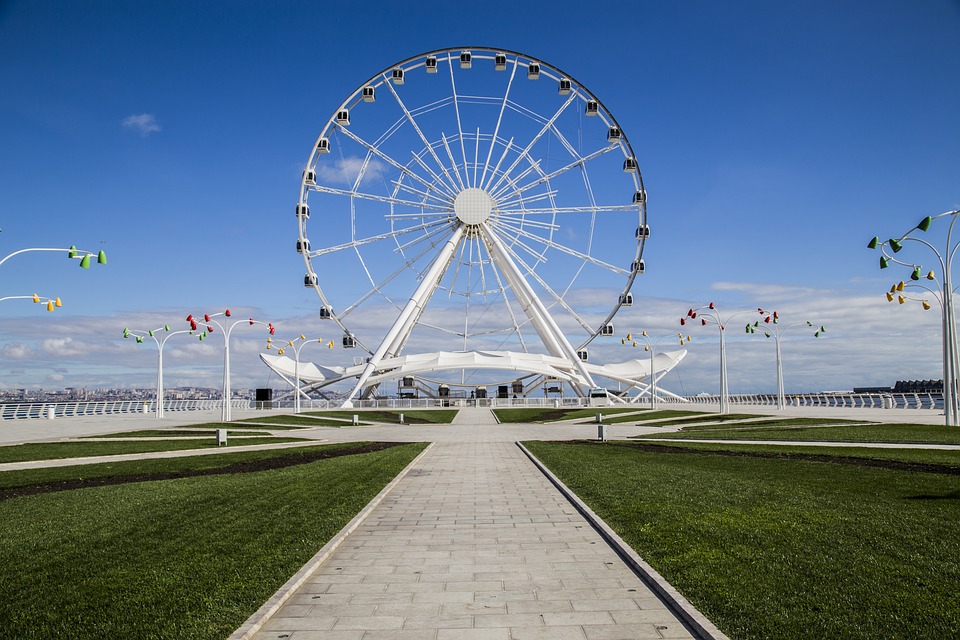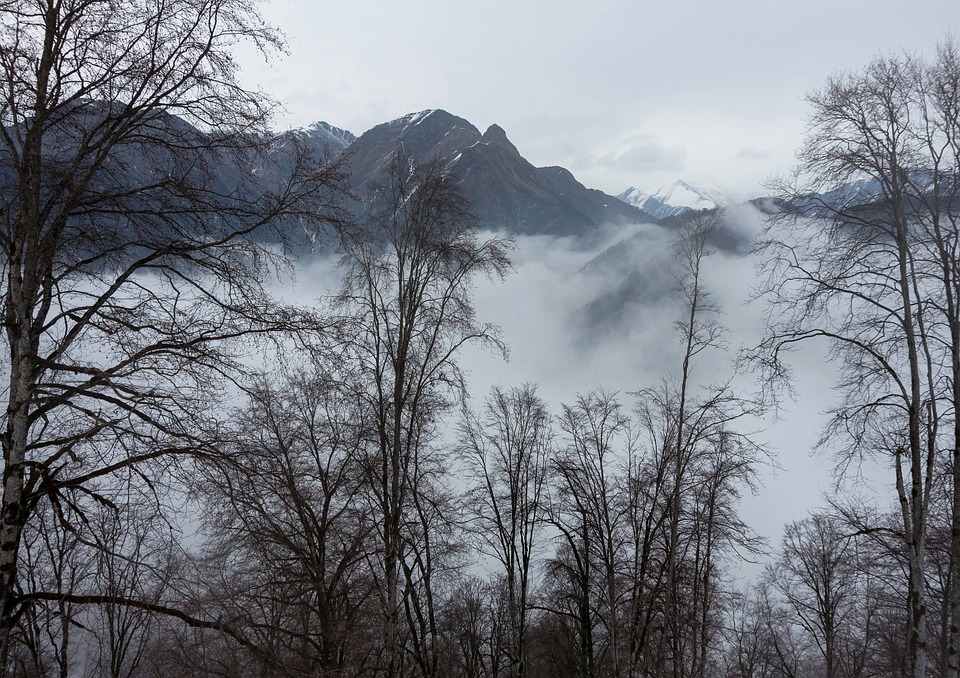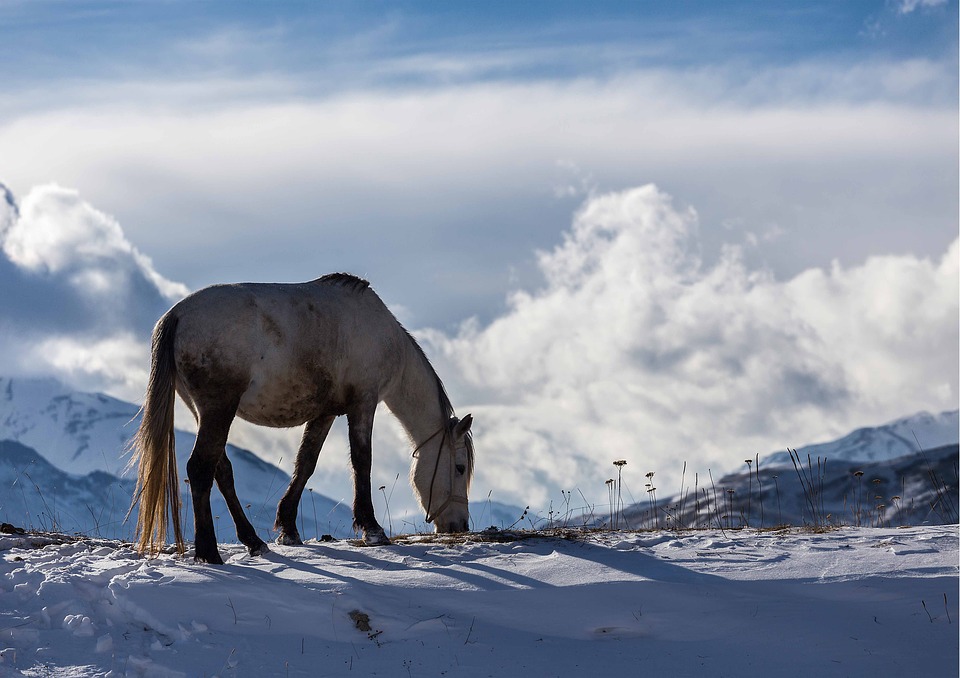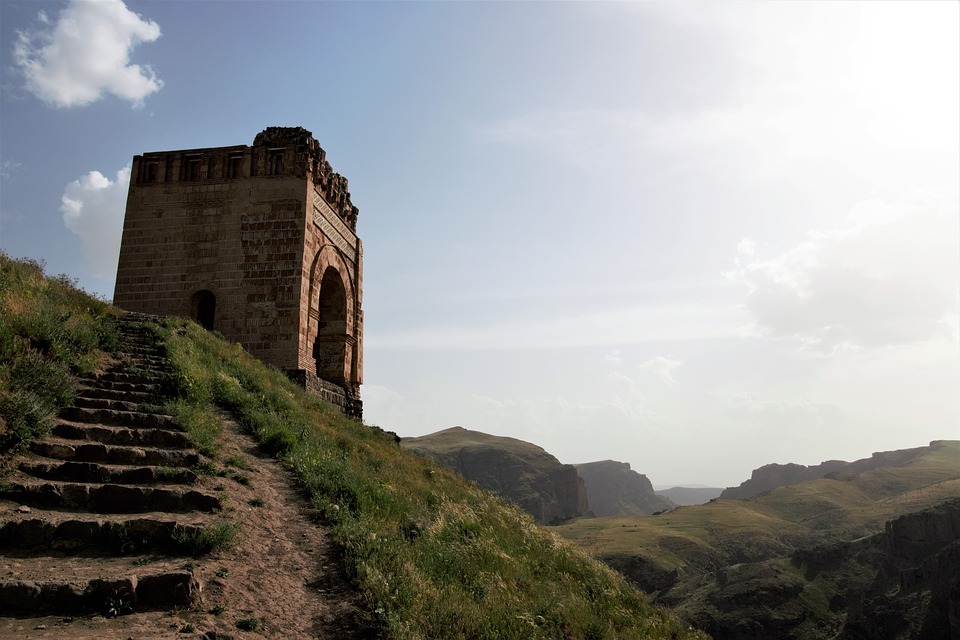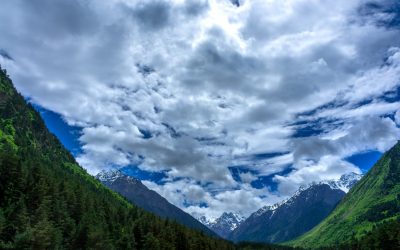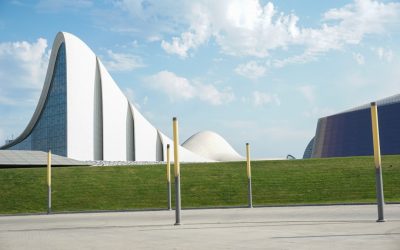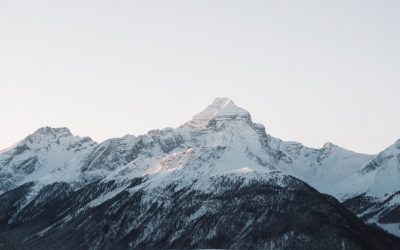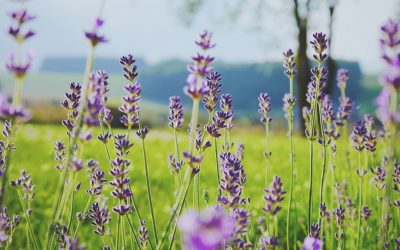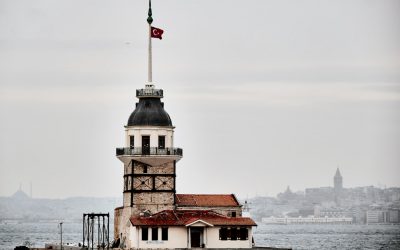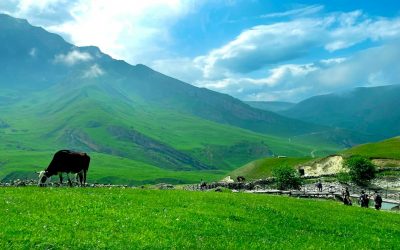Azerbaijan
(Azərbaycan Respublikası (Republic of Azerbaijan))

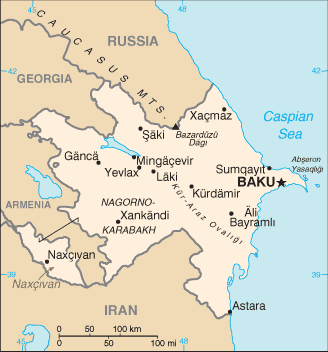
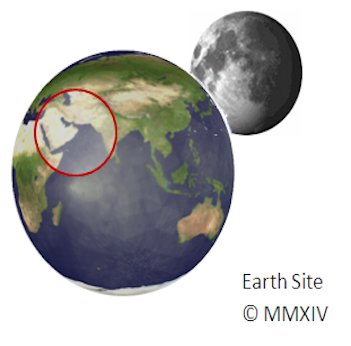
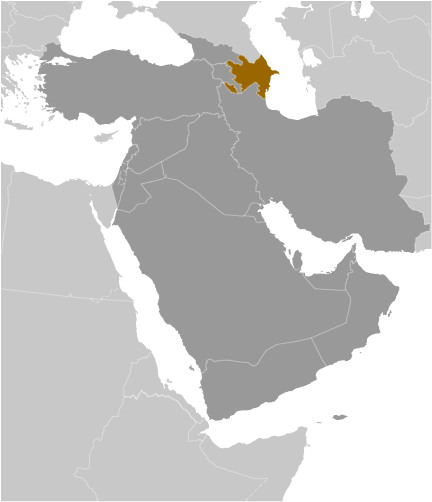
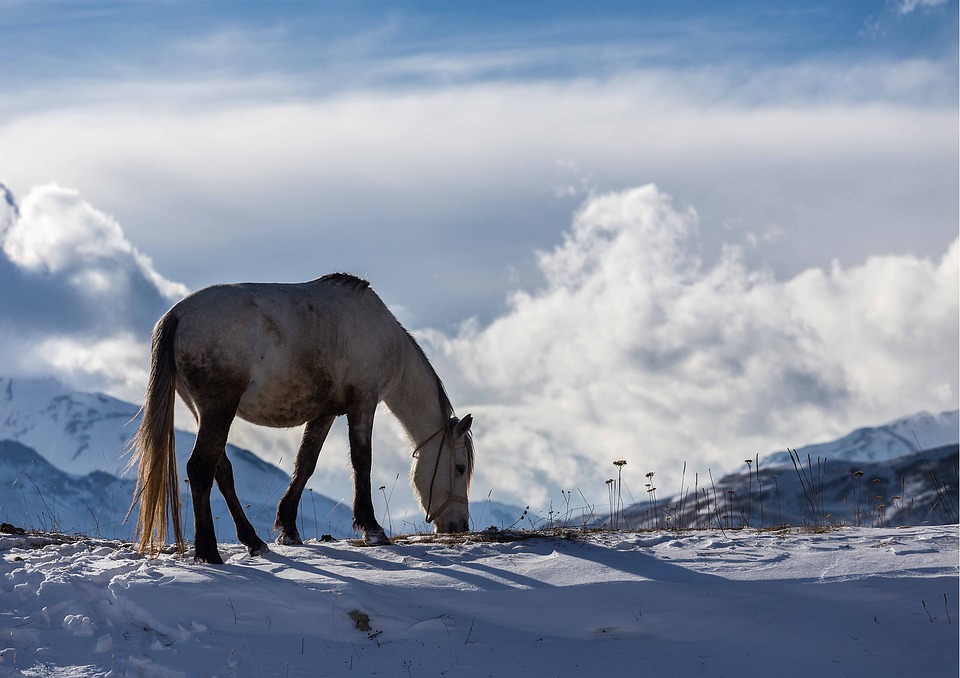
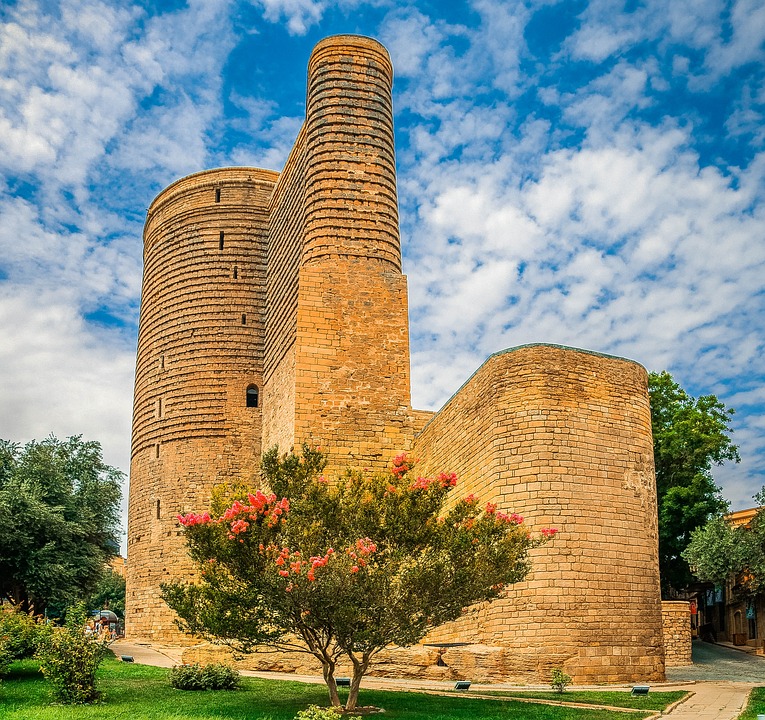
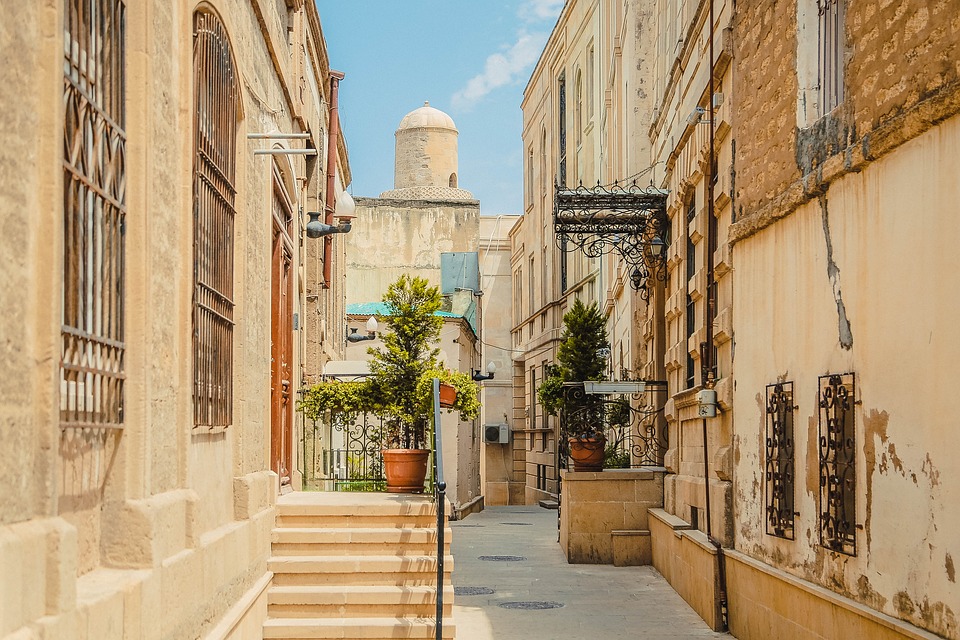
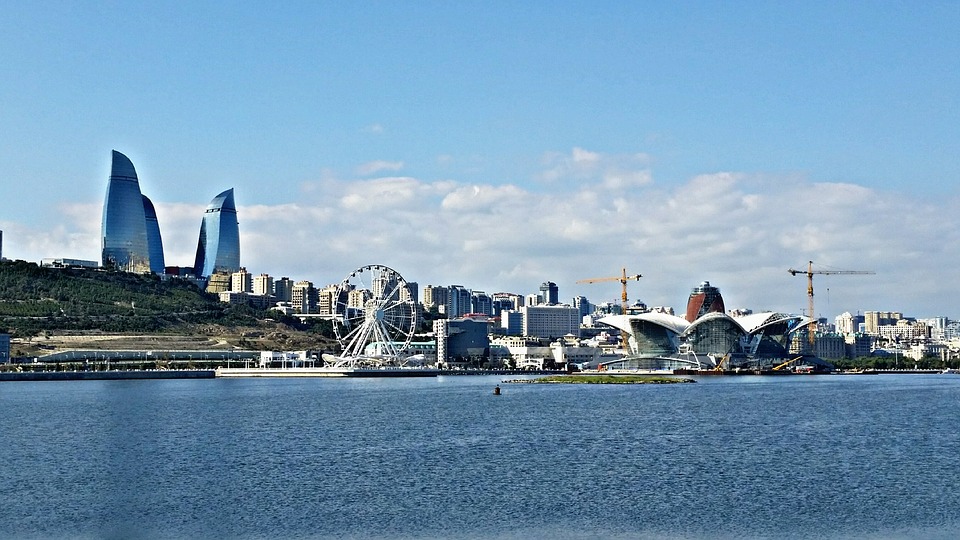
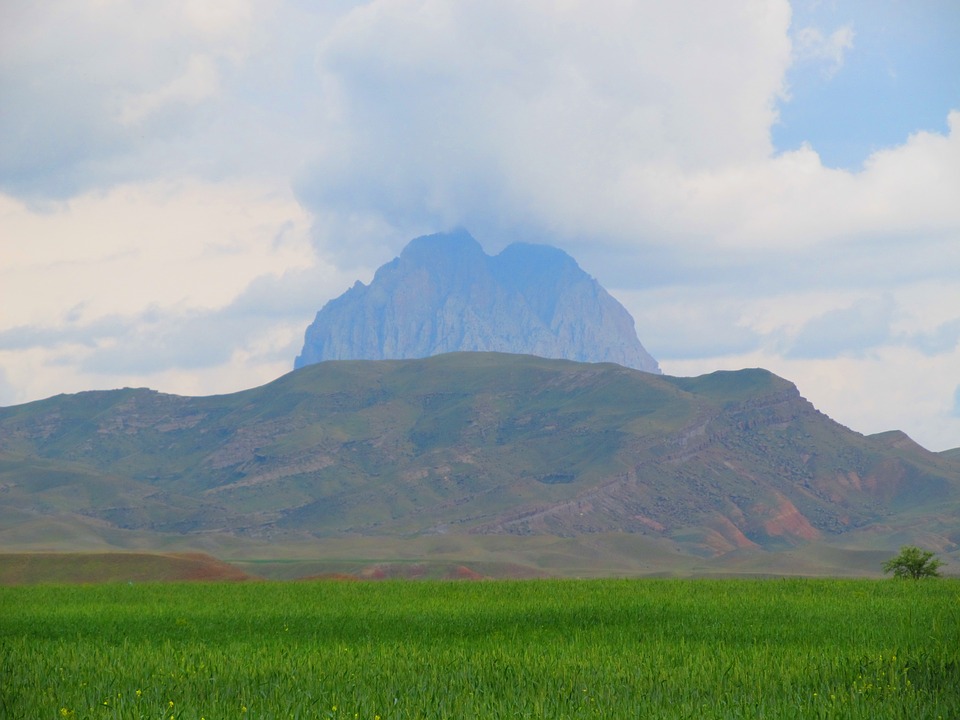
Capital of Azerbaijan : Baku (Bakı)
Population (Estimated July 2012): 9,493,600
Area: 86,600km2 or 33,436mi2
Currency: Manat (AZN)
Official Language: Azerbaijanian
Political Information: Parliamentary Republic
Official Religion: No Official Religion (approximately 93.4% of the population are Muslim, 2.5% are Russian Orthodox, 2.3% are Armenian Orthodox and 1.8% have other religious beliefs)
Highest Mountain: Şahdağ Mountain at 4,243m or 13,921ft
GDP Official Exchange Rate (OER is more precise at gauging a countries economic power)
(Estimated 2011): $68.5 billion (US$) or £41.1 billion (GBP)
GDP (OER) Per Capita (per member of the population estimated 2011): (US$) or (GBP)
GDP Purchasing Power Parity (PPP is good for gauging living conditions and use of resources but not as accurate as OER. This data has been calculated based on the sum value of all goods and services produced in the country valued at prices prevailing in the United States)
(Estimated 2011): $93.02 billion (US$) or £55.812 billion (GBP)
GDP (PPP) Per Capita (per member of the population estimated 2011): $10,200 (US$) or £6,120 (GBP)
Time Zone (GMT/UTC): +4:00
Counties/Provinces/States:
Rayons: Abseron Rayonu, Agcabadi Rayonu, Agdam Rayonu, Agdas Rayonu, Agstafa Rayonu, Agsu Rayonu, Astara Rayonu, Balakan Rayonu, Barda Rayonu, Beylaqan Rayonu, Bilasuvar Rayonu, Cabrayil Rayonu, Calilabad Rayonu, Daskasan Rayonu, Davaci Rayonu, Fuzuli Rayonu, Gadabay Rayonu, Goranboy Rayonu, Goycay Rayonu, Haciqabul Rayonu, Imisli Rayonu, Ismayilli Rayonu, Kalbacar Rayonu, Kurdamir Rayonu, Lacin Rayonu, Lankaran Rayonu, Lerik Rayonu, Masalli Rayonu, Neftcala Rayonu, Oguz Rayonu, Qabala Rayonu, Qax Rayonu, Qazax Rayonu, Qobustan Rayonu, Quba Rayonu, Qubadli Rayonu, Qusar Rayonu, Saatli Rayonu, Sabirabad Rayonu, Saki Rayonu, Salyan Rayonu, Samaxi Rayonu, Samkir Rayonu, Samux Rayonu, Siyazan Rayonu, Susa Rayonu, Tartar Rayonu, Tovuz Rayonu, Ucar Rayonu, Xacmaz Rayonu, Xanlar Rayonu, Xizi Rayonu, Xocali Rayonu, Xocavand Rayonu, Yardimli Rayonu, Yevlax Rayonu, Zangilan Rayonu, Zaqatala Rayonu, Zardab Rayonu
Cities: Ali Bayramli Sahari, Baki Sahari, Ganca Sahari, Lankaran Sahari, Mingacevir Sahari, Naftalan Sahari, Saki Sahari, Sumqayit Sahari, Susa Sahari, Xankandi Sahari, Yevlax Sahari
Autonomous Republic: Naxcivan Muxtar Respublikasi (Nakhichevan)
Leaders: President Ilham ALIYEV (since 31 October 2003); First Vice President Mehriban ALIYEVA (since 21 February 2017).
Sources: CIA World Fact Book, Encyclopaedia Britannica.
Azerbaijan, located at the crossroads of Eastern Europe and Western Asia, is a country that is often overlooked by tourists and travelers. However, this small nation is a land of contrasts and rich cultural heritage, with a history that dates back thousands of years. From its stunning landscapes to its vibrant cities, Azerbaijan offers a unique blend of old-world charm and modernity.
Azerbaijan has a long and complex history, with influences from various empires and civilizations. It was once part of the Persian Empire, the Russian Empire, and the Soviet Union. Today, it is an independent nation with a growing economy and a rich cultural heritage.
The country’s strategic location on the Caspian Sea has made it an important hub for trade and commerce throughout history. Its proximity to Europe, Asia, and the Middle East has also shaped its culture and traditions. Azerbaijan is known for its hospitality, with locals welcoming visitors with open arms and offering them a taste of their traditional cuisine.
Geography and Climate of Azerbaijan: From the Caspian Sea to the Caucasus Mountains
Azerbaijan’s geography is incredibly diverse, with a variety of landscapes ranging from the Caspian Sea coastline to the snow-capped peaks of the Caucasus Mountains. The country is also home to vast plains, fertile valleys, and arid deserts.
The Caspian Sea, which borders Azerbaijan to the east, is the largest inland body of water in the world. It not only provides a valuable source of fish and other marine resources but also serves as a major transportation route for oil and gas exports.
The Caucasus Mountains, which run through Azerbaijan’s northern border with Russia, are a natural barrier that has shaped the country’s history and culture. These mountains are home to several ethnic groups, including the Azeris, who make up the majority of the population.
Azerbaijan’s climate varies depending on the region. The coastal areas along the Caspian Sea have a subtropical climate, with hot summers and mild winters. Inland, the climate becomes more continental, with hot summers and cold winters. The mountainous regions experience colder temperatures and heavy snowfall in winter.
Azerbaijan’s History and Independence: From Soviet Rule to Modern Nationhood
Azerbaijan has a long and complex history that dates back thousands of years. It has been influenced by various empires and civilizations, including the Persian Empire, the Roman Empire, and the Mongol Empire.
In the 19th century, Azerbaijan came under Russian rule and remained part of the Russian Empire until the Russian Revolution in 1917. After a brief period of independence, Azerbaijan was incorporated into the Soviet Union in 1920.
During the Soviet era, Azerbaijan experienced rapid industrialization and urbanization. However, it also faced repression and political suppression under Soviet rule. In 1991, following the collapse of the Soviet Union, Azerbaijan declared its independence and became a sovereign nation.
Since gaining independence, Azerbaijan has undergone significant political and economic reforms. It has transitioned from a Soviet-style government to a presidential republic, with a focus on democratic principles and human rights. The country has also made efforts to diversify its economy and attract foreign investment.
Azerbaijani Culture and Traditions: Music, Dance, Food, and Hospitality
Azerbaijani culture is rich and diverse, with influences from various civilizations and empires throughout history. Music and dance play a central role in Azerbaijani culture, with traditional instruments such as the tar (a stringed instrument) and the balaban (a wind instrument) being widely used.
Azerbaijani cuisine is known for its rich flavors and use of local ingredients. Traditional dishes include plov (a rice dish), dolma (stuffed vegetables), and kebabs. Tea is also an important part of Azerbaijani culture, with locals often gathering to drink tea and socialize.
Hospitality is highly valued in Azerbaijani culture, with locals known for their warm and welcoming nature. Guests are often treated with great respect and are offered food and drinks as a sign of hospitality. This tradition is deeply rooted in Azerbaijani culture and is seen as a way to build strong relationships and connections.
Azerbaijani Language and Literature: A Window into the Country’s Past and Present
The Azerbaijani language, also known as Azeri, is the official language of Azerbaijan. It is a Turkic language that is closely related to Turkish and other Turkic languages spoken in Central Asia.
The Azerbaijani language has played a significant role in shaping the country’s culture and identity. It is used in literature, poetry, and music, and is an important part of everyday life for Azerbaijanis.
Azerbaijani literature has a long and rich history, with notable poets and writers such as Nizami Ganjavi and Mirza Fatali Akhundov. These literary figures have contributed to the development of Azerbaijani literature and have helped preserve the country’s cultural heritage.
Azerbaijan’s Economy and Industry: Oil, Gas, and Beyond
Azerbaijan’s economy has traditionally been heavily reliant on oil and gas exports. The country is rich in natural resources, particularly oil reserves in the Caspian Sea. Oil production has been a major driver of economic growth in Azerbaijan, attracting foreign investment and creating jobs.
In recent years, Azerbaijan has made efforts to diversify its economy and reduce its dependence on oil and gas. The government has implemented economic reforms aimed at attracting foreign investment in non-oil sectors such as tourism, agriculture, and manufacturing.
Azerbaijan has also invested in infrastructure development, including the construction of new roads, railways, and airports. These investments have helped improve connectivity within the country and have made Azerbaijan an attractive destination for foreign investors.
Azerbaijani Politics and Government: From Presidential Republic to Democratic Reforms
Azerbaijan is a presidential republic, with the President serving as the head of state and government. The President is elected by popular vote and has significant powers, including the ability to appoint government officials and dissolve the parliament.
In recent years, Azerbaijan has implemented democratic reforms aimed at improving transparency and accountability in the government. These reforms have included measures to combat corruption, strengthen the rule of law, and protect human rights.
However, Azerbaijan still faces challenges in terms of political freedom and human rights. Critics argue that the government has limited political opposition and suppressed freedom of speech and assembly. The government has taken steps to address these concerns, but there is still work to be done to ensure a fully democratic society.
Azerbaijan’s International Relations: Relations with Russia, Iran, Turkey, and the West
Azerbaijan’s foreign policy is guided by its strategic location and its desire to maintain good relations with its neighbors and the international community. The country has historically had close ties with Russia, Iran, and Turkey, due to its geographical proximity and shared cultural heritage.
Azerbaijan has also sought to strengthen its ties with Western countries, particularly in Europe and the United States. The country has been a member of the Council of Europe since 2001 and has sought closer cooperation with NATO.
Azerbaijan plays an important role in regional and international organizations. It is a member of the United Nations, the Organization for Security and Cooperation in Europe (OSCE), and the Commonwealth of Independent States (CIS). The country also hosts several international events, including the Eurovision Song Contest in 2012.
Azerbaijani Tourism and Attractions: From Baku to the Countryside
Azerbaijan has made significant efforts to promote tourism and attract visitors to the country. The capital city of Baku is a popular destination, with its mix of modern architecture and historic landmarks. The Old City, a UNESCO World Heritage site, is a must-visit, with its narrow streets, ancient buildings, and stunning views of the Caspian Sea.
Outside of Baku, Azerbaijan offers a variety of attractions for tourists. The countryside is dotted with picturesque villages, ancient ruins, and natural wonders. The Gobustan National Park, located just outside of Baku, is home to thousands of rock carvings dating back thousands of years.
The country’s natural beauty is also a draw for tourists. The Talysh Mountains in the south offer opportunities for hiking and exploring, while the Absheron Peninsula is known for its sandy beaches and resorts.
Azerbaijani Sports and Achievements: From Chess to Olympic Medals
Azerbaijan has a strong sporting culture and has achieved success in various sports at both the national and international levels. Chess is particularly popular in Azerbaijan, with the country producing several world champions and grandmasters.
In recent years, Azerbaijan has also made a name for itself in other sports. The country has won medals in wrestling, boxing, judo, and weightlifting at the Olympic Games and other international competitions.
Azerbaijan hosted the inaugural European Games in 2015, showcasing its ability to organize major sporting events. The country has also bid to host other international events, including the Olympic Games.
Conclusion: Recap of Azerbaijan’s rich history, culture, and achievements, and its potential for future growth and development.
In conclusion, Azerbaijan is a land of contrasts and rich cultural heritage. Its diverse geography and climate have shaped its history and culture, while its strategic location has made it an important hub for trade and commerce. Azerbaijan’s transition from Soviet rule to modern nationhood has been marked by political and economic reforms, as well as efforts to promote tourism and attract foreign investment.
Azerbaijani culture is vibrant and diverse, with music, dance, food, and hospitality playing a central role. The Azerbaijani language and literature offer a window into the country’s past and present, while its economy has traditionally been reliant on oil and gas exports. However, Azerbaijan has made efforts to diversify its economy and attract foreign investment in non-oil sectors.
Azerbaijan’s political system is a presidential republic, with recent democratic reforms aimed at improving transparency and accountability. The country has close ties with neighboring countries such as Russia, Iran, and Turkey, as well as with Western countries. Azerbaijan’s tourism industry is growing, with popular destinations in Baku and the countryside attracting visitors from around the world.
Azerbaijan has also achieved success in sports, particularly in chess and Olympic competitions. The country has hosted major sporting events and continues to bid for future events.
Overall, Azerbaijan’s rich history, culture, and achievements make it a fascinating destination for travelers and a country with great potential for future growth and development.
Climate Zones of Azerbaijan: Regional Variations in Weather
Azerbaijan is a country located in the South Caucasus region of Eurasia. It is bordered by the Caspian Sea to the east, Russia to the north, Georgia to the northwest, Armenia to the west, and Iran to the south. The country has a diverse geography, with a combination of mountains, plains, and coastal areas. This diverse geography contributes to the presence of different climate zones throughout Azerbaijan. Climate zones are areas with distinct weather patterns and characteristics. They are determined by factors such as temperature, precipitation, and atmospheric pressure. Understanding climate zones is important as it helps us understand the different ecosystems and habitats that exist within a country or region. It also helps us understand how climate change may impact these areas differently. Summary Azerbaijan has a diverse range of climate zones, including humid subtropical, semi-arid, highland, continental, and Mediterranean. The country’s geography plays a significant role in determining its climate zones, with factors such as altitude and proximity to the Caspian Sea influencing temperature and precipitation patterns. The humid subtropical climate zone is characterized by hot summers and mild winters, with high levels of rainfall throughout the year. The semi-arid climate zone experiences hot summers and cold winters, with low levels of rainfall and high evaporation rates. The highland climate zone is characterized by cooler temperatures and higher precipitation levels, while the continental climate zone experiences extreme temperature variations throughout the year. The Mediterranean climate zone is found in the Nakhchivan Autonomous Republic and is characterized by mild, wet winters and hot, dry summers. There are regional variations in temperature and precipitation within each climate zone, with...
Azerbaijan’s Political Boundaries: Provinces, Districts, or Historical Lines?
Azerbaijan, located in the South Caucasus region of Eurasia, is a country with a rich history and diverse cultural heritage. It is bordered by the Caspian Sea to the east, Russia to the north, Georgia to the northwest, Armenia to the west, and Iran to the south. Throughout its history, Azerbaijan has been influenced by various empires and has experienced changes in its political boundaries. Political boundaries play a crucial role in defining a country’s identity, as they determine its territorial extent and shape its governance and administration. Summary Azerbaijan’s political boundaries have evolved over time, with changes in administrative divisions and the creation of new provinces and districts. Provinces in Azerbaijan are divided into districts, each with its own government and administrative structure. Historical lines, such as the border with Armenia, play an important role in Azerbaijan’s political boundaries and governance. Challenges to Azerbaijan’s political boundaries include territorial disputes with neighboring countries and ethnic tensions within the country. The impact of political boundaries on Azerbaijan’s economy is significant, with different regions having varying levels of development and resources. The Evolution of Azerbaijan’s Administrative Divisions The administrative divisions of Azerbaijan have evolved over time, reflecting the country’s historical and political changes. During the Soviet era, Azerbaijan was divided into eleven administrative divisions known as oblasts. However, after gaining independence in 1991, Azerbaijan restructured its administrative divisions and adopted a system of provinces and districts. Provinces in Azerbaijan: A Brief Overview Provinces, also known as regions or rayons, are the primary administrative divisions in Azerbaijan. There are currently 66 provinces in the country, each with its own capital city. The...
Azerbaijan’s Varied Landscape: Mountains, Valleys, and Plains
Azerbaijan, located in the South Caucasus region of Eurasia, is a country known for its diverse topography. From majestic mountains to scenic valleys and vast plains, Azerbaijan offers a wide range of natural landscapes that attract tourists from all over the world. This article will explore the different types of landscapes in Azerbaijan and their significance in the country’s culture, economy, and infrastructure. Additionally, we will discuss the importance of conservation efforts to protect Azerbaijan’s varied landscape. Summary Azerbaijan boasts a diverse topography, including mountains, valleys, plains, and unique geological formations. The Caucasus Mountains are a majestic feature of Azerbaijan’s landscape and play a significant role in the country’s economy. The scenic valleys of Azerbaijan are important for agriculture and tourism, offering stunning views and cultural experiences. The vast plains of the country are crucial for transportation and infrastructure, connecting cities and facilitating trade. Conservation efforts are underway to protect Azerbaijan’s varied landscape and preserve its natural beauty for future generations. The Majestic Caucasus Mountains The Caucasus Mountains are a prominent feature of Azerbaijan’s landscape. Stretching across several countries, including Azerbaijan, Georgia, and Russia, these mountains are known for their majestic beauty and rich biodiversity. In Azerbaijan, the Caucasus Mountains play a significant role in shaping the country’s climate and providing a habitat for various plant and animal species. For tourists, the Caucasus Mountains offer a plethora of outdoor activities and breathtaking views. Popular mountain destinations in Azerbaijan include Shahdag National Park, Tufandag Ski Resort, and Khinalig Village. Shahdag National Park is a popular destination for hiking, skiing, and wildlife spotting. Tufandag Ski Resort offers skiing and snowboarding opportunities...
Azerbaijan’s Population Density: A Closer Look
Azerbaijan, a country located in the South Caucasus region of Eurasia, has a population density of approximately 120 people per square kilometer. This makes it one of the most densely populated countries in the region. Understanding population density is crucial for policymakers and researchers as it provides insights into various aspects of society, such as urbanization, migration patterns, ethnic diversity, and environmental impacts. By studying population density, we can gain a better understanding of how these factors shape Azerbaijan’s social and economic landscape. Summary Azerbaijan has a population density of 120 people per square kilometer. Population density in Azerbaijan has increased steadily since the 1950s. The capital city of Baku has the highest population density in Azerbaijan. Rural areas in Azerbaijan have a lower population density than urban areas. Azerbaijan’s population density is expected to continue to increase in the future. Historical Context: How Population Density Has Changed Over Time Over the years, Azerbaijan’s population density has undergone significant changes. In the early 20th century, the country experienced a rapid increase in population density due to high birth rates and limited emigration opportunities. However, during the Soviet era, many Azerbaijanis migrated to other parts of the Soviet Union, resulting in a decline in population density. After gaining independence in 1991, Azerbaijan witnessed a period of economic growth and stability, leading to an increase in population density. The country’s population grew rapidly, fueled by natural growth and immigration from neighboring countries. Today, Azerbaijan continues to experience steady population growth, albeit at a slower pace. Factors that have influenced population density changes include economic opportunities, political stability, and social factors. For...
Azerbaijan: Ecology and Natural Resources
Azerbaijan and Its Rich Natural Resources: Ecology and Natural Resources Azerbaijan is a land of striking contrasts, where the majestic Caucasus mountains meet the Caspian Sea, and vast reserves of energy resources coexist with efforts toward environmental protection. This article explores the natural resources of Azerbaijan, its ecological policies, and the vital role played by the Ministry of Ecology and Natural Resources in managing the nation’s wealth. Whether you’re curious about oil and gas, water resources, or the government’s green agenda, this is a comprehensive guide worth your time. 📚 Article Outline What Makes Azerbaijan Unique in Terms of Natural Resources? How Does the Ministry of Ecology and Natural Resources Operate? What Role Does the Caspian Sea Play in Azerbaijan’s Resource Economy? Oil and Gas: The Backbone of Production in Azerbaijan What Are the Key Mineral Resources in the Country? How Significant Are Azerbaijan’s Water Resources? What Environmental Protection Efforts Exist in the Republic of Azerbaijan? How Are Natural Resources Affecting Azerbaijan’s GDP? What is the Historical Role of the Absheron Peninsula? What Are the Challenges and Future Directions for Sustainability? 1. What Makes Azerbaijan Unique in Terms of Natural Resources? Azerbaijan is renowned for its wealth of natural resources, especially oil and gas, which have shaped its geopolitical and economic relevance. Strategically located between Eastern Europe and Western Asia, the Republic of Azerbaijan sits atop rich deposits that have attracted foreign interest since the beginning of the 20th century. The natural resources of Azerbaijan include not just hydrocarbons but also iron ore, pyrite, chalcopyrite, and zeolite raw materials found in regions such as Gobustan, Shamkir, and Ordubad. These...
Discovering Azerbaijan’s Cultural & Historical Landmarks
Azerbaijan is a country with a rich cultural heritage that spans centuries. From its ancient cities to its rural areas, Azerbaijan is filled with historical landmarks, unique traditions, and a diverse cuisine. Preserving this cultural heritage is of utmost importance, as it allows future generations to connect with their roots and understand the history and traditions of their ancestors. Summary Azerbaijan boasts a rich cultural heritage with influences from various civilizations. The ancient city of Baku is a must-visit destination for history and architecture enthusiasts. Rural areas in Azerbaijan offer hidden gems waiting to be discovered by adventurous travellers. Azerbaijani carpet weaving is a cultural treasure that has been passed down through generations. Azerbaijan’s diverse cuisine, from traditional dishes to modern fusion, is a reflection of its cultural diversity. The ancient city of Baku: exploring its history and architecture Baku, the capital city of Azerbaijan, is a treasure trove of history and architecture. The city has a long and storied past, dating back to ancient times. It has been influenced by various civilizations, including the Persians, Arabs, Mongols, and Russians. This rich history is reflected in the city’s architecture, which showcases a blend of different styles. Famous landmarks in Baku include the Maiden Tower, a UNESCO World Heritage Site that dates back to the 12th century. The tower is an iconic symbol of Baku and offers panoramic views of the city. Another notable landmark is the Palace of the Shirvanshahs, a medieval palace complex that was once the seat of power for the Shirvanshah dynasty. Baku’s architecture also includes modern marvels such as the Flame Towers, a trio of...
Discovering the Hidden Gems of Azerbaijan: A Journey Through its Rich Culture and Stunning Landscapes
Azerbaijan, a country located at the crossroads of Eastern Europe and Western Asia, is a hidden gem waiting to be discovered by travelers. While it may not be as well-known as its neighboring countries, Azerbaijan offers a wealth of attractions and experiences that are sure to captivate any visitor. From its rich culture and history to its stunning natural landscapes and delicious cuisine, Azerbaijan has something for everyone. Key Takeaways Azerbaijan’s hidden gems offer a unique travel experience blending East and West. Baku, the city of contrasts, is a must-see destination with its rich culture and history. Azerbaijan’s natural landscapes are breathtaking and offer a variety of outdoor activities. Sheki’s ancient wonders and rural villages are enchanting and offer a glimpse into Azerbaijan’s past. Azerbaijan’s cuisine, art, craftsmanship, and festivals are a treasure trove of traditions waiting to be discovered. Azerbaijan’s Rich Culture: A Blend of East and West Azerbaijan’s culture is a fascinating blend of Eastern and Western influences, shaped by its location on the Silk Road and its history of being ruled by various empires. The country’s history dates back thousands of years, with evidence of human habitation dating back to the Stone Age. Over the centuries, Azerbaijan has been influenced by Persian, Turkish, Russian, and Arab cultures, among others. One of the most prominent aspects of Azerbaijani culture is its traditional music, dance, and art forms. The mugham, a traditional form of music that combines poetry and instrumental music, is considered a masterpiece of oral and intangible heritage by UNESCO. Traditional dances, such as the yalli and the khanchobany, are also an important part of Azerbaijani...
